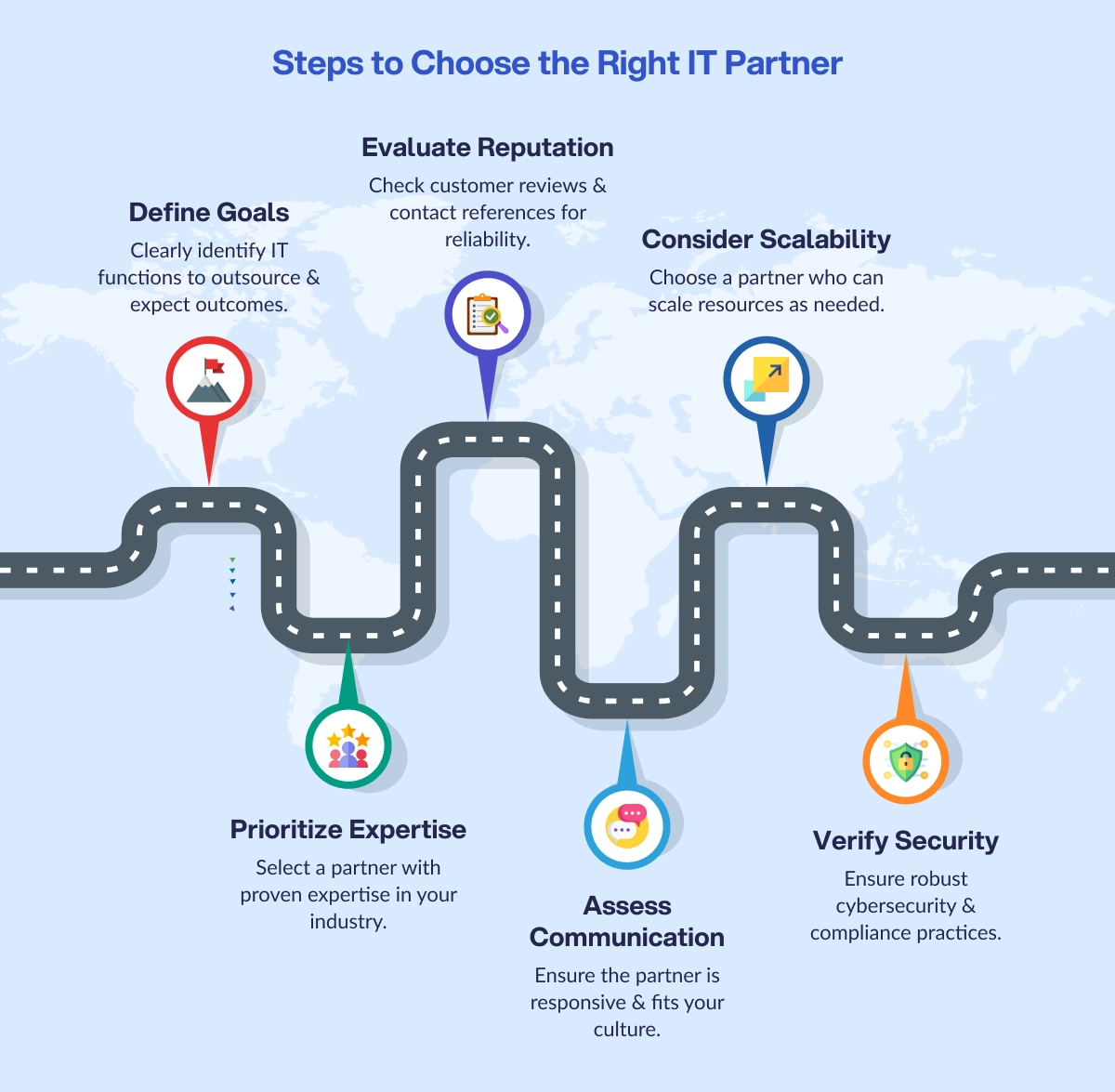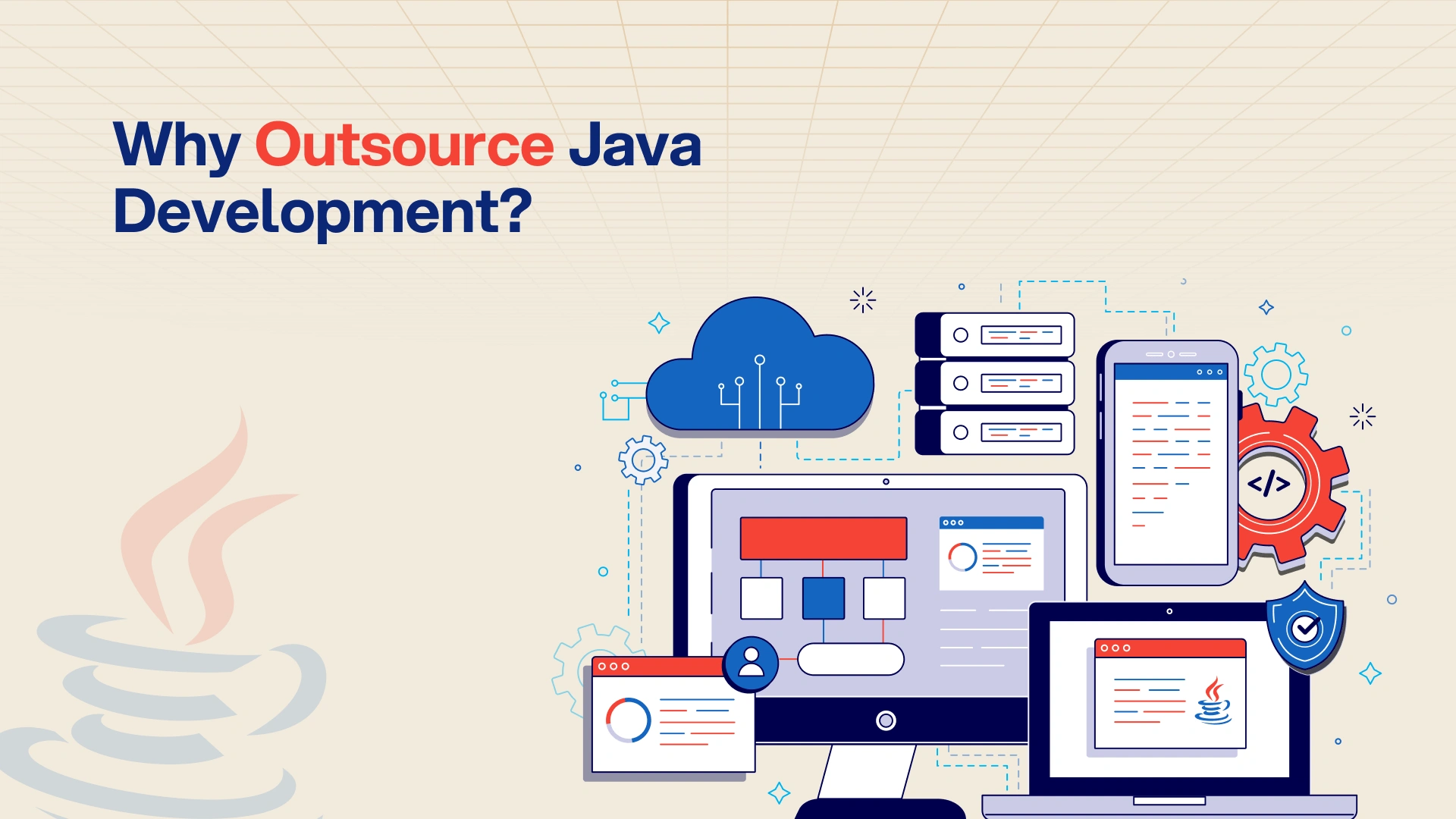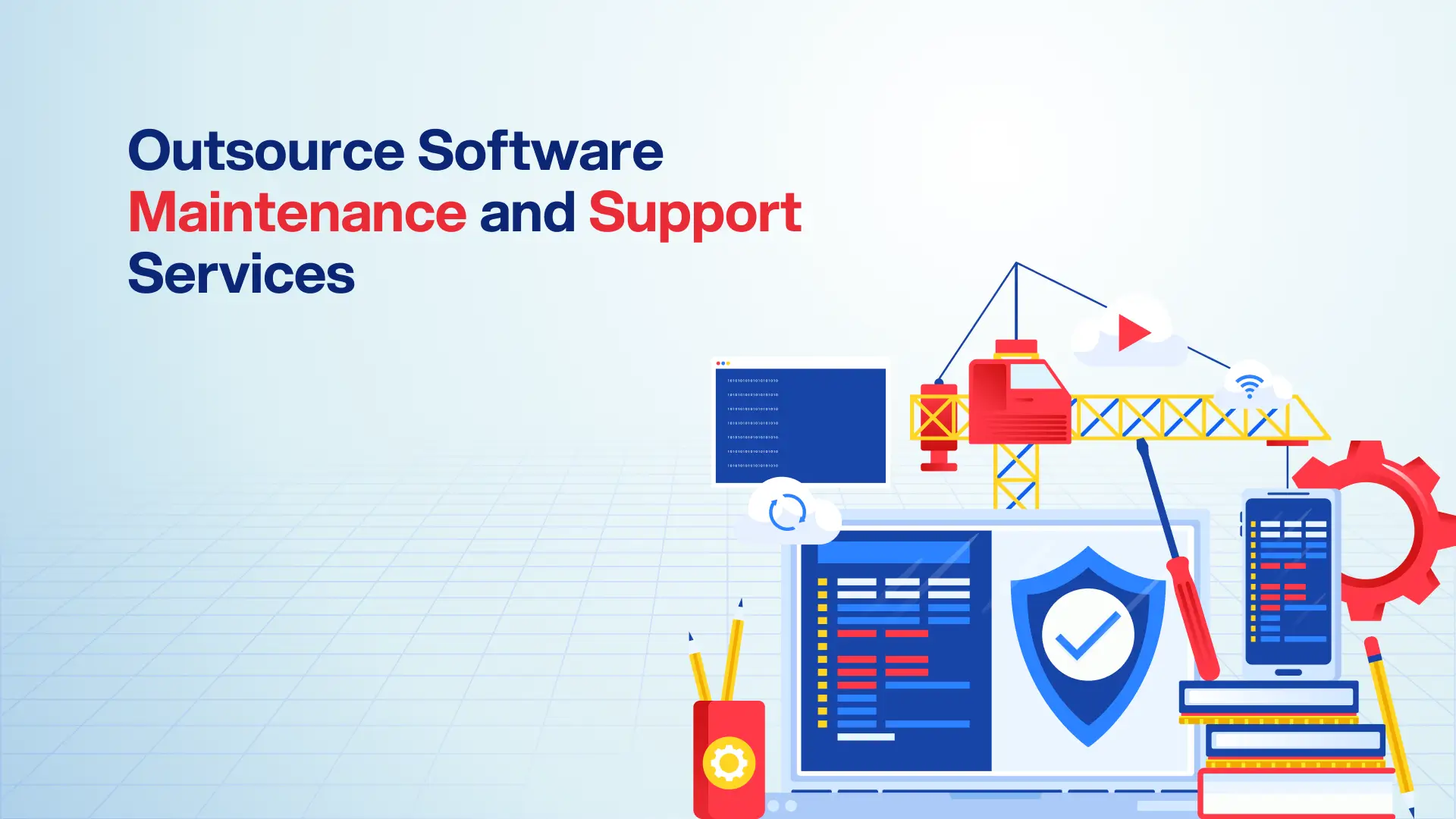Post Activity
 102
102
Table of Content
Share This Post
Table of Content
IT Outsourcing Empowers a Small Business
Building a full in-house IT team can be expensive and overwhelming for a small business. That’s why more and more small business owners are turning to IT outsourcing.
Big names like WhatsApp and GitHub started small too. They outsourced their early IT needs to grow faster without breaking the bank. You can do the same.
IT outsourcing means delegating some technology functions to external service providers. The functions may primarily include:
- Software Development;
- Technical Support;
- Cybersecurity; and
- Cloud Management.
Outsourcing allows small businesses to focus resources on core business operations and innovation.
Key Differences Between In-house and Outsourced IT Services
IT Outsourcing Can Save Costs and Drive Growth for Small Businesses
Hiring a full-time software developer in the U.S. can cost a small business up to $154,000 per year. Switching to external service providers often minimize this cost by 50% or more.
Business owners can save money and reallocate this capital to product development, marketing, or market expansion.
WhatsApp, now a global messaging giant, outsourced much of its early development to a team in Eastern Europe. This allowed the founders to keep costs low, iterate quickly, and focus on user growth rather than building an expensive in-house team. The result: WhatsApp scaled rapidly, attracted investors, and was ultimately acquired by Meta for $19 billion.
GitHub, now a global leader in software development collaboration, outsourced its backend development in its early days due to budget constraints. By leveraging external expertise, GitHub built a robust MVP without the overhead of a full-time in-house team.
Thinking of Outsourcing?
Access a wide range of outsourcing companies and find your best fit.
When Is the Right Time for a Small Business to Outsource IT Services?
An optimal timing for outsourcing is when the internal team is overstretched.
When a business experiences rapid expansion, its IT demands grow in complexity and scale. Outsourcing offers scalable solutions that can adapt quickly, ensuring IT infrastructure keeps pace with business growth.
As a business grows or faces seasonal fluctuations, external IT providers can adjust their services accordingly. They can provide the right level of support when needed.
IT Outsourcing Best Practices for a Small Business
For small businesses, choosing the right partner and executing a well-structured IT outsourcing strategy is critical. Below is a detailed guide based on industry best practices, real-world insights, and case examples.
Kindly, refer to the figure below to get a better understanding and flow of how to strategically choose an outsourcing partner.

1. Define Clear Goals and Scope of Work
Before looking for an outsourcing partner, clearly identify which IT functions you want to outsource and what outcomes you expect.
2. Prioritize Domain Knowledge and Technical Expertise
Choose a partner with proven experience in your industry and the specific technologies relevant to your project.
For example, healthcare or fintech companies require providers familiar with compliance standards like HIPAA or PCI-DSS. Reviewing case studies and past projects offers insight into their capabilities.
3. Evaluate Reputation and References
Check customer reviews on platforms such as Clutch, GoodFirms, Glassdoors, or LinkedIn. Contact previous clients to verify reliability, adherence to deadlines, and quality of communication.
For further information, look at other basic information like founding year, employee size, and number of offices. They often indicate the sustainability of the business and credibility.
Ready to Build Your Team?
Let’s create together, innovate together, and achieve excellence together. Your vision, our team – the perfect match awaits.
4. Assess Communication and Cultural Fit
Outsourced teams with strong proficiency in the client’s primary language (often English) reduce misunderstandings and enable smoother interactions.
A strong cultural fit fosters trust, engagement, and collaboration. They are essential for remote or distributed teams working on complex IT projects.
5. Consider Scalability and Flexibility
Your partner should be able to scale resources up or down based on project needs and evolving business demands. Flexible pricing models and contract terms are important to accommodate growth or pivots without excessive overhead.
6. Verify Security and Compliance Practices
Ensure the provider follows robust cybersecurity protocols and complies with relevant industry regulations. This is especially critical for businesses handling sensitive data.
Establish detailed service level agreements (SLAs) that cover data protection, access controls, incident response protocols, and compliance obligations.
Final Thoughts
You don’t need to build everything yourself. The most forward-thinking small business leaders are no longer trying to stretch limited internal resources or gamble on costly hires. Instead, they’re forging strategic partnerships with IT outsourcing partners. Along with technical skills, they bring speed, scalability, and security.
Find Your Perfect Software Outsourcing Partner
Unlock a world of trusted software outsourcing companies and elevate your business operations seamlessly.






